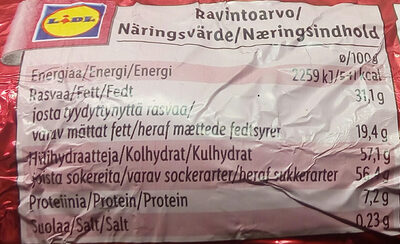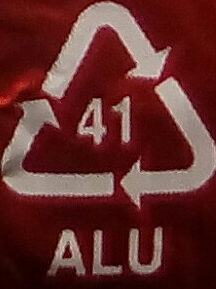Père Noël Au Chocolat Au Lait - Favorina - 200 g
Ambiguous barcode: This product has a Restricted Circulation Number barcode for products within a company. This means that different producers and stores can use the same barcode for different products.
×
This product page is not complete. You can help to complete it by editing it and adding more data from the photos we have, or by taking more photos using the app for Android or iPhone/iPad. Thank you!
×
Streckkod: 20062293
Vanligt namn: Mjölkchoklad
Kvantitet: 200 g
Förpackning: en:Metal, Återvinningsbara metaller, Aluminium
Kategorier: Snacks, Söta snacks, en:Cocoa and its products, en:Festive foods, en:Christmas foods and drinks, Choklad, en:Chocolate molds, Mjölkchoklad, en:Chocolate Sculptures, en:Christmas chocolates, en:Chocolate Santa Clauses
Etiketter, certifieringar, utmärkelser:
Fair trade, Fairtrade International
Ingredients ursprung: Europeiska unionen, Icke-Europeiska unionen
Tillverknings eller bearbetningsplats: Tyskland
Butiker: Lidl
Matching with your preferences
Report a problem
Datakällor
Produkt tillagd den av kiliweb
Senast ändrad produktsida på av roboto-app.
Produktsida också redigerad av asmoth, beniben, ecoscore-impact-estimator, olofolleola4, openfoodfacts-contributors, packbot, quechoisir, standardanalysis, yuka.VFl3S0RLaGZtZlVxbGZRWHpCUGwzOUVwOTZHM2VtYnFOc2RLSUE9PQ, yuka.YmY0Zkcvc0RtdkEzcGRzZDhBL085SWxweVpMeWZ6cW5OdElMSWc9PQ, yuka.sY2b0xO6T85zoF3NwEKvlhYcA-vThDzpMDvThF-Z2uzRH7LTPe9q7bjkHqs, yuka.sY2b0xO6T85zoF3NwEKvlkZuVNPHpm7mEh7ln3-g4-XfP7XTStxOuo3ZEas, yuka.sY2b0xO6T85zoF3NwEKvllxAXPr_nyD9HT_inBON9v2_f5PRW_Nf0ofcOKs, yuka.sY2b0xO6T85zoF3NwEKvlmAefvf18mvhNDDkk0CQ7P6xE5rkWIpx5NTkNKs.













